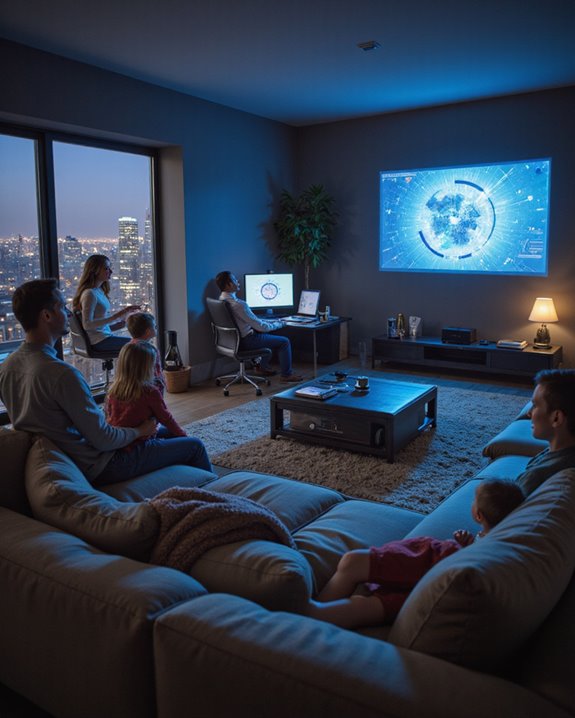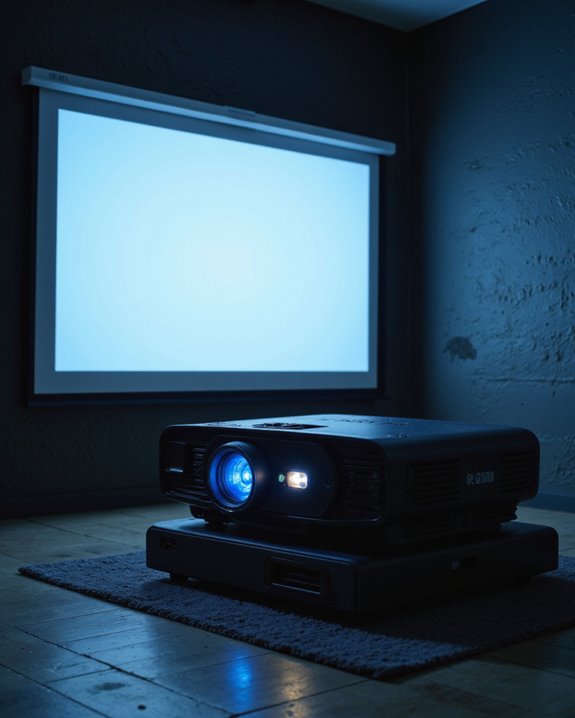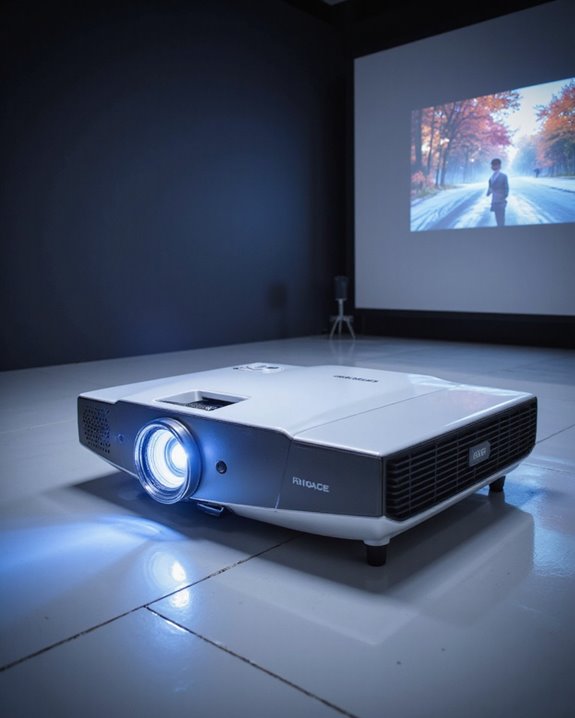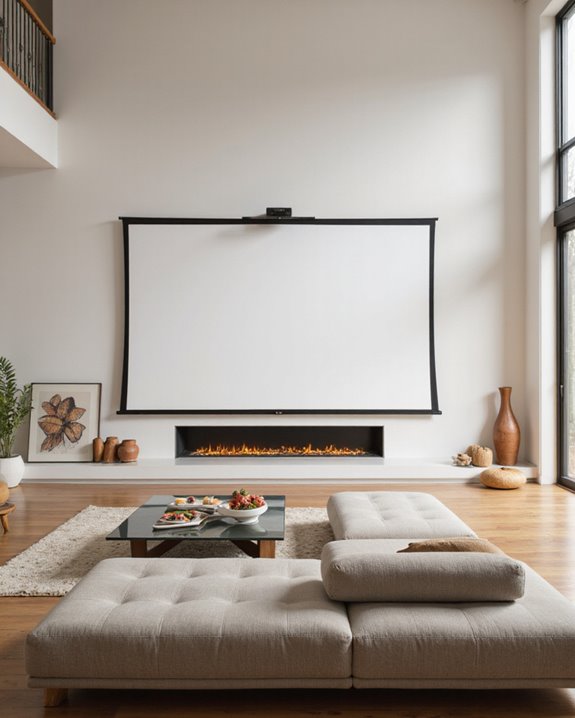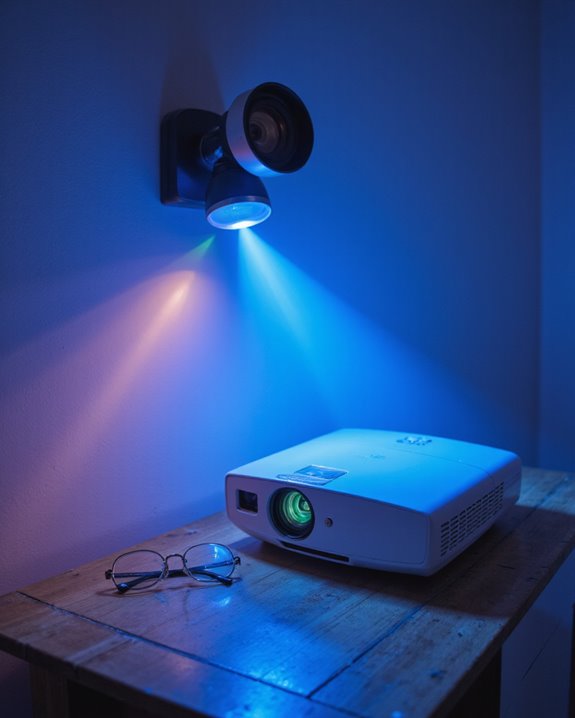Projector TVs are widely used across multiple sectors, with educational institutions leading adoption at over 50% for classroom displays. Business environments utilize them for presentations and training, while home theater enthusiasts create immersive viewing experiences with screens up to 300 inches. Gaming venues and esports facilities employ projectors for large-format competitive play. Modern projector technology, from DLP to laser systems, continues evolving to meet diverse user needs. Additional applications showcase the technology’s expanding versatility beyond traditional settings.
Key Takeaways
- Educational institutions rely heavily on projectors, with over 50% of classrooms using DLP systems for interactive learning and presentations.
- Business professionals use projectors in meeting rooms and conference spaces for presentations, training sessions, and corporate communications.
- Home theater enthusiasts install projectors for immersive movie-watching experiences with screen sizes between 100-300 inches.
- Gamers and esports venues utilize projectors for large-scale displays, supporting 4K resolution and high refresh rates.
- Entertainment venues and public spaces employ projectors for digital art installations, public displays, and large-scale visual presentations.
Understanding Projector TV Technology and Its Evolution
The evolution of projector TV technology represents a significant journey spanning over seven decades of visual innovation. Beginning in the 1950s, projection advancements transformed corporate presentations with the introduction of CRT (Cathode Ray Tube) projectors, which used three tubes to display primary colors. Brightness levels and native resolutions have continually improved, resulting in clearer and more vibrant images for various applications. Document cameras have replaced many traditional opaque projectors while offering enhanced digital connectivity and features. Display innovations accelerated in the 1990s when integrated computer projectors emerged, combining digital panels with projection capabilities. The technology landscape shifted dramatically as LCD (Liquid Crystal Display) and DLP (Digital Light Processing) projectors replaced bulky CRT systems, offering improved portability and image quality. Modern laser projectors now represent the cutting edge of projection technology, delivering enhanced brightness and efficiency. These improvements have made projector systems more versatile and practical for various applications, from home theaters to professional venues.
Educational Institutions Leading the Way in Projector Adoption

Since the early 2000s, educational institutions have emerged as frontrunners in projector technology adoption, with over half of classroom projectors now utilizing DLP systems. Schools and universities increasingly rely on interactive display features to enhance student engagement and facilitate collaborative learning environments. The integration of high-brightness projectors with ambient light rejection screens allows for clearer visuals even in brightly lit classrooms. The COVID-19 pandemic accelerated this trend, pushing institutions to adapt their projection calibration for hybrid learning models. With 99% of public schools equipped with internet access, educational facilities are well-positioned to leverage modern projector capabilities. About 40% of schools are switching to mobile projection systems, allowing for flexible classroom setups and improved teaching methods. This shift reflects the broader transformation in educational technology, where projectors serve as essential tools for both in-person and remote instruction delivery. Recent data shows 65% of smart classrooms now incorporate DLP projectors as part of their standard educational technology infrastructure.
Business Applications and Corporate Meeting Spaces
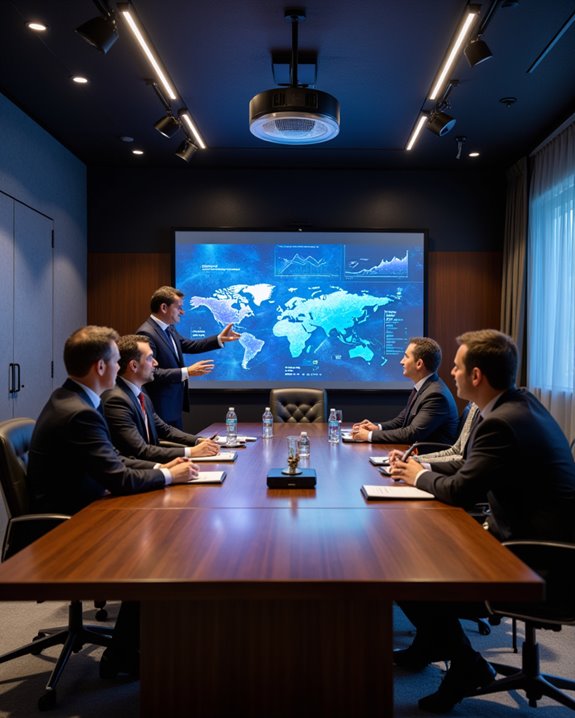
While educational institutions pioneered widespread projector adoption, corporate environments have emerged as another significant domain for projection technology. Businesses utilize projectors extensively in meeting rooms and conference spaces for presentations, corporate branding initiatives, and visual merchandising displays. With the eLearning industry projected to reach $374 billion by 2026, many businesses are integrating projectors into their digital learning environments.
Modern projectors serve multiple functions in business settings, from facilitating interactive training sessions to enabling cost-effective large-group presentations. Their versatility allows companies to transform any room into a professional presentation space, making them particularly valuable for:
- High-impact client presentations
- Employee training and development
- Team collaboration sessions
- Product demonstrations
- Corporate event displays
The technology’s advancement has brought features like wireless connectivity, 4K resolution, and enhanced brightness levels, making projectors an essential tool for businesses seeking professional visual solutions without the space requirements and expense of multiple large displays. These innovations support seamless integration with existing digital infrastructures, further boosting their adoption across various industries.
Home Theater Enthusiasts and Entertainment Setups
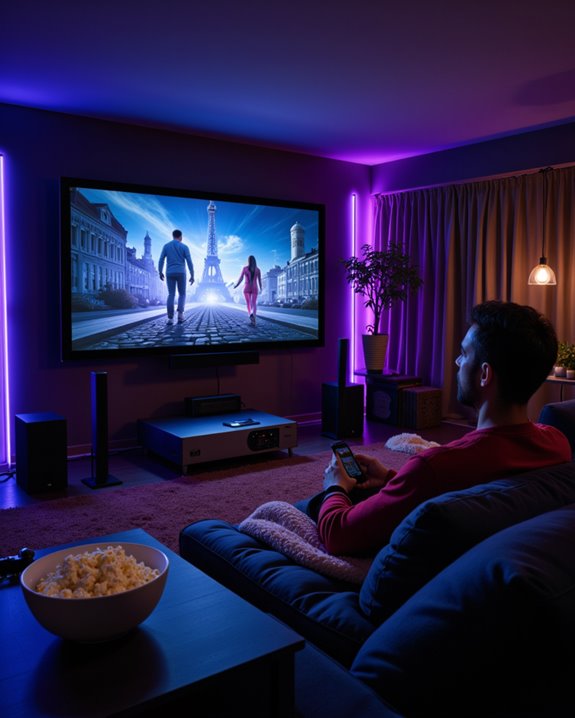
Modern home theater enthusiasts represent a dedicated segment of projector users who prioritize creating immersive cinematic experiences within their living spaces. These users take advantage of projectors’ ability to display images on screens ranging from 100 to 300 inches, far surpassing typical TV dimensions. They often integrate advanced audio systems and portable screens for maximum flexibility in their setups.
Home theater enthusiasts appreciate the versatility of projectors, using them not only for movies but also for creative applications like art installations and gaming. The combination of customizable screen sizes, flexible mounting options, and compatibility with various audio configurations allows them to transform ordinary rooms into professional-grade entertainment spaces. Many enthusiasts choose between traditional lamp-based systems and newer laser projectors, depending on their specific needs for brightness, color accuracy, and longevity. Serious enthusiasts often invest in models like the Epson Home Cinema 5050UB for its superior contrast ratio and excellent color accuracy.
Gaming Communities and Competitive Esports Venues
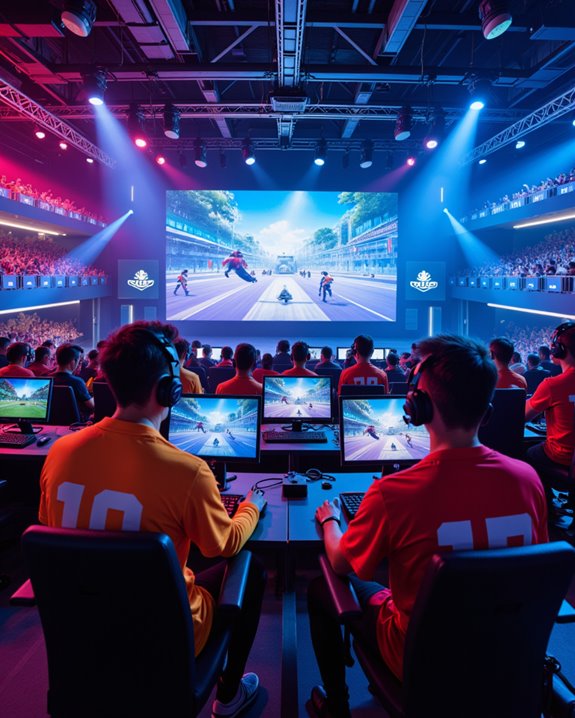
The explosive growth of gaming communities and esports venues has transformed how projector technology serves competitive players and spectators alike. Projectors deliver superior gamer immersion through massive display sizes, offering a cost-effective alternative to large TVs while maintaining 4K resolution at 60Hz refresh rates. Modern gaming projectors now commonly feature HDR support to enhance visual quality and depth. This technology proves especially valuable for group gaming sessions and tournaments.
In competitive esports venues, large-scale esports displays serve as centerpieces for audience engagement. These venues increasingly rely on projector systems that can be integrated with other technologies to create immersive viewing experiences. The global esports market, growing at 24.4% annually through 2027, drives continuous innovation in display solutions. Projectors’ portability and flexibility make them ideal for both permanent gaming arenas and temporary tournament setups, supporting the industry’s rapid expansion.
Frequently Asked Questions
How Long Do Modern Projector Bulbs Typically Last Before Needing Replacement?
Bright and bold, clear and crisp, modern projector bulb lifespans vary markedly by type. UHP and UHM bulbs require replacement after 2,000-4,000 hours, while LED and laser systems offer extended intervals of 20,000-50,000 hours.
Can Projectors Work Effectively in Rooms With Ambient Light?
Projectors can function in rooms with ambient light when using sufficient brightness levels (2,000-3,000 lumens). However, ambient light challenges require proper adjustments, including specialized screens and strategic placement to maintain ideal image quality.
What’s the Minimum Distance Needed Between Projector and Screen?
While 80% of standard projectors require 8-12 feet distance, the minimum distance varies by screen size and projector type. Projector placement guidelines suggest 1.5 times the screen width as a general minimum spacing requirement.
Do Projectors Consume More Electricity Than Traditional TVS?
Power efficiency varies between models. Modern projectors can consume less electricity than comparable-sized TVs, though high-end projectors may have higher energy consumption. LED projector technology generally offers better power efficiency than traditional options.
Can Outdoor Projectors Function Properly in Cold Weather Conditions?
Outdoor projectors can function in cold weather with proper precautions. Models designed for outdoor durability include temperature control systems and protective enclosures. However, extreme cold may affect performance and require additional protective measures.

